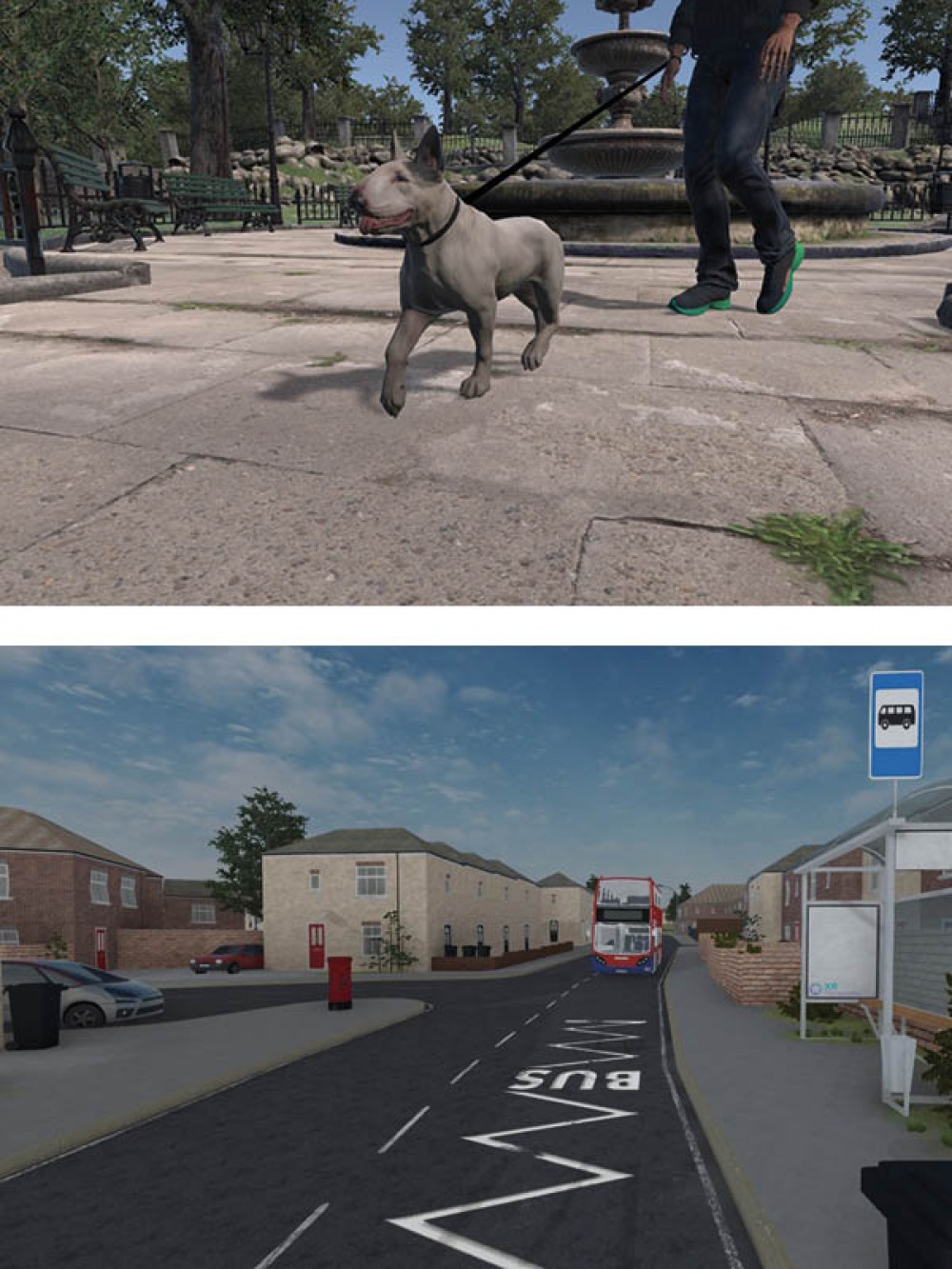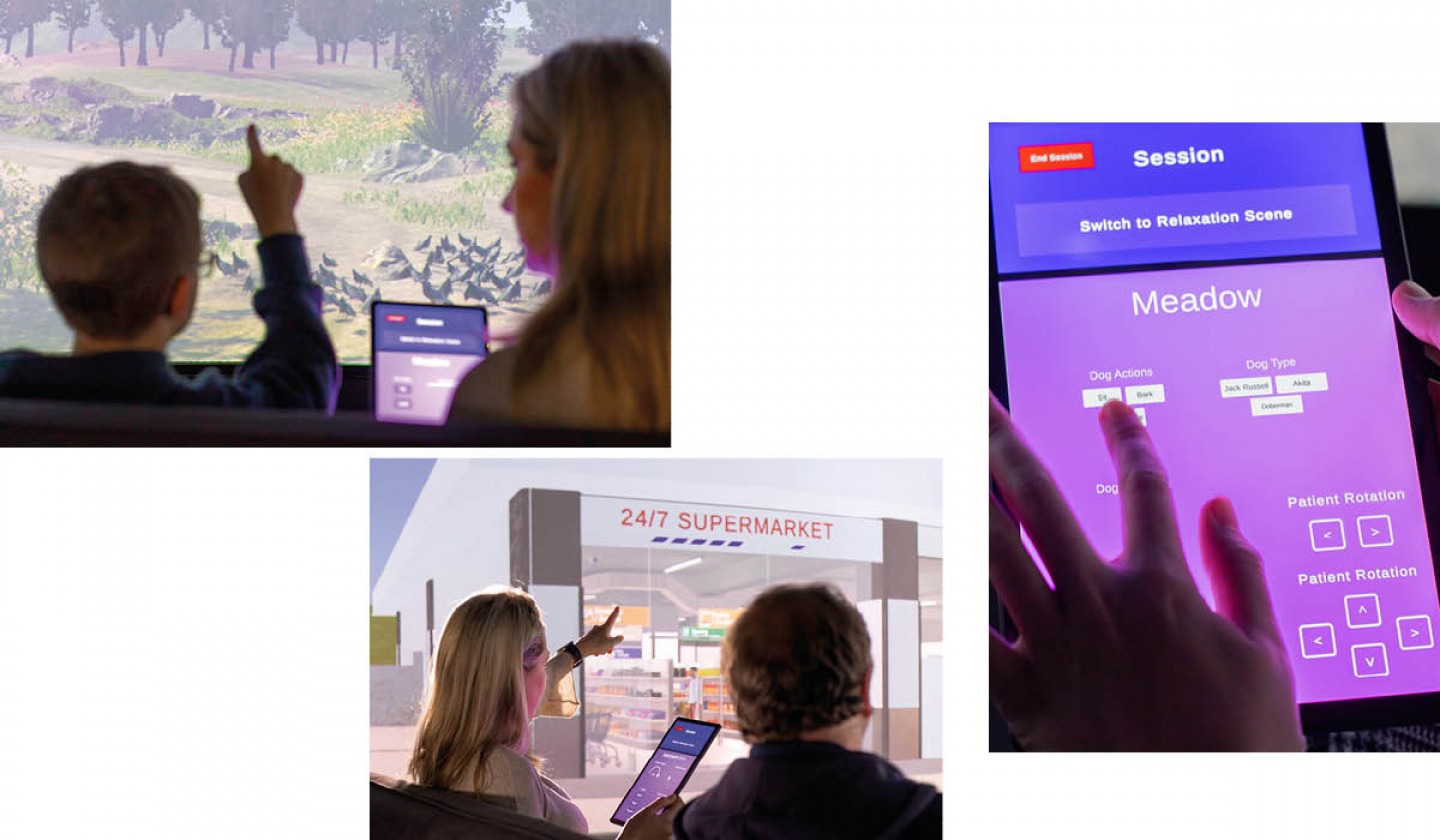How VR is Helping People with Anixety and Phobias in Gateshead

Gateshead’s XR Therapeutics is delivering groundbreaking treatments for anxiety and phobias using virtual reality (VR) – engineering an immersive VR suite which people can use without having to wear a headset. Head of operations Penny Day tells us more

‘XR Therapeutics provides an intervention to support people with mental health conditions including anxiety and phobias. It’s a technology that uses virtual reality, combining it with the techniques of cognitive behaviour therapy and exposure,’ explains project delivery manager Penny Day.
‘Some individuals I’ve met who experienced exposure treatment from a young age, receiving treatments for phobias of dogs, for example – it actually made their anxieties worse because it is impossible to fully control part of a living environment,’ Penny continues. ‘With our treatment you have a therapist sat next to the patient with a smart tablet that can control the environment. We also set up a pre-meeting with the patient so we can find out exactly where the anxieties are triggered from before we start. For example, someone with a dog phobia we might discover isn’t afraid of dogs in the home setting, but in a park or off the lead they might be. We can adjust the simulated scene to make it specific to their needs, as well adjusting it in real time.’
Read More: Leeds Med-Tech Start-Up Has the Answer to Reducing Hospital Waiting Times (and it Includes AI)
So how does it work? After consultation with an XR Therapeutics therapist, work then begins on programming a scene unique to the patient. The patient then sits alongside a therapist in their high-tech virtual reality studio.
‘If you’ve ever been to an IMAX theatre, our system looks and feels a bit like a mini-version of that. It’s a big 180 degree screen with a projector. You sit in the middle and there’s no need for a headset. We also have surround sound with 4D audio – it’s very immersive,’ Penny explains.
We think it can be better to stay away from headsets when using an immersive studio. VR headsets can create quite a solitary experience, whereas with our setup the therapist really leads the session and can engage the patient much more easily,’ she says. ‘We also have an anxiety scale that we use, so there’s never a point where the patient will feel very very anxious – it’s always at a controlled level. We can then scale up the sessions, so one session it might be a dog in a park on a lead, the next off the lead, then one of a specific dog breed they are more anxious around; it’s purposefully gradual.’
VR can seem intimidating to those that are unfamiliar with it. In a world of strange visions for the future of VR/life integration (such as Meta (formerly Facebook)’s almost dystopian vision of a ‘METAverse’), XR Therapeutics are instead using VR in a way that provides hope, and practical help.
‘If you’ve ever been to an IMAX theatre, our system looks and feels a bit like a mini-version of that’

'VR is very useful as a tool for people who may not be able to access more traditional forms of mental health intervention – it creates a new way for people to engage with therapy. Our research is focused on children and adults with autism, and within that research it was found that traditional cognitive behavioural therapy was not overly effective in treating phobia and anxiety,’ Penny explains. ‘That’s where our product has been developed from. A child’s phobia or autism can develop to become debilitating, it can stop them from leaving the house, accessing education, work, and effect those around them. Our intervention is much shorter – taking around two weeks for treatment. The current NHS waiting times are between nine to 12 months, and we can take that treatment down to one to four weeks. The sheer amount of people on waiting lists and an overcapacity of patients means that this technology will become more common.’
Dedicated to helping people with phobias and anxieties no matter the cause, XR Therapeutics will continue to grow their bank of scenarios to treat almost any phobia you can think of. ‘The longer we are active the more of a bank of scenarios we will have so that these scenes can be generated quicker – our waiting times are already low, but they should get even lower with time.’







